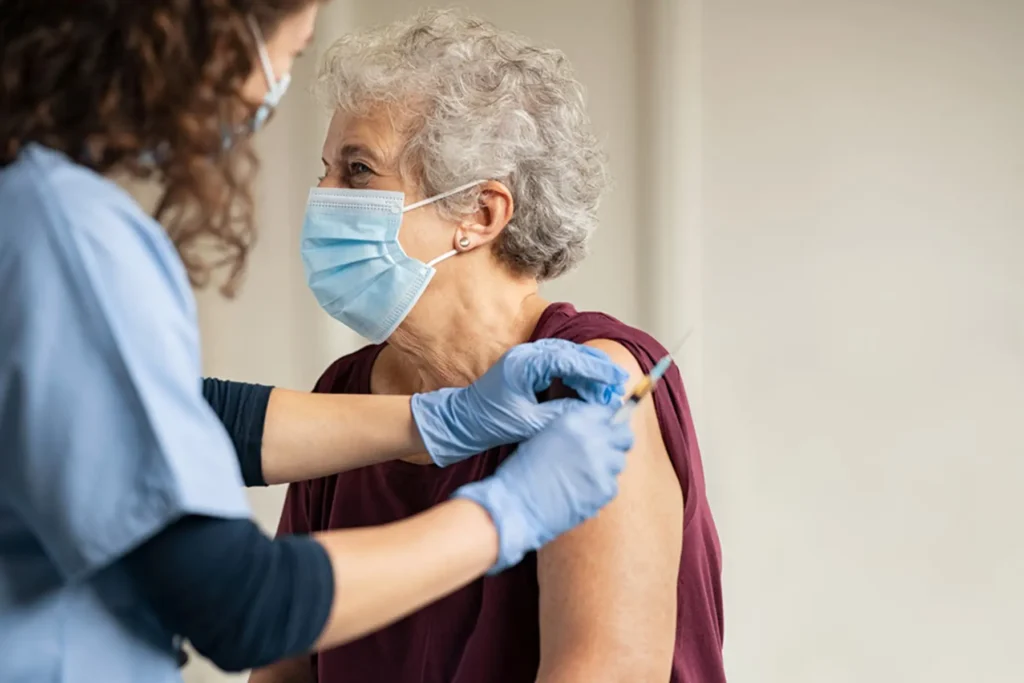Vaccines play an instrumental role in the medical and pharmaceutical sectors, shielding against various diseases and infections. They are categorized based on their manufacturing process and include:
- Live or attenuated vaccines
- Dead or inactivated vaccines
- Conjugate vaccines
- Recombinant vaccines
- Toxoid vaccines
- DNA vaccines
The average patient may hear different facts about different vaccines and are unsure what to believe. While getting to know and understand the main categories of vaccines, you will have a better understanding of what makes them tick. The two main classifications of vaccines are live and dead vaccines.
Live Attenuated Vaccines
Live vaccines derive their name from the fact that they’re produced from “wild” bacteria or viruses capable of causing disease. These microorganisms are weakened or “attenuated” through lab cultivation. Once administered, live attenuated vaccines proliferate and reproduce within the recipient’s body, provoking an immune response. The vaccine organism multiplies until the body identifies it as an alien pathogen and generates antibodies to combat it.
Consequently, when the body encounters the actual disease pathogens, it is equipped with antibodies ready to ward off the illness. The immune response triggered by a live attenuated vaccine is robust, and typically, a single dose provides lifelong protection. However, since the pathogen is alive, there’s a chance it could mutate within the body and fail to trigger the desired immune response. Additionally, there is a slight risk that the microbe in the vaccine might revert to its virulent form and cause disease.
Dead or Inactivated vaccines
These vaccines are formulated from pathogens that have been killed or inactivated through heat, chemicals like formalin, or radiation. The functioning of these vaccines hinges on the immune system’s response to the introduced virus, bacteria, or toxin produced by the germ. However, the immune response these vaccines elicit isn’t as robust as that triggered by attenuated vaccines. As a result, to maintain prolonged immunity against diseases, repeated booster doses are necessary after specific intervals.
Differences between dead and live vaccines
Live attenuated vaccines are composed of weakened viruses or bacteria, making them highly sensitive. To ensure these microbes stay weakened and to minimize mutation possibilities, these vaccines necessitate compulsory refrigeration. Conversely, dead or inactivated vaccines are relatively stable, eliminating the threat of mutation from dead microbes. Hence, they can be stored without the need for refrigeration.
Another distinction lies in the strength of the immune response. Live vaccines stimulate a potent immune response akin to combating the actual disease. Thus, a single dose usually offers lifelong protection. In contrast, dead vaccines induce a more subdued response, necessitating periodic booster doses to rejuvenate the immune system’s memory.
Given their instability, live vaccines are unsuitable for individuals with compromised, impaired, or weakened immune systems, such as AIDS patients or those undergoing chemotherapy. The reaction to the live microbe could potentially trigger the disease itself. On the other hand, dead vaccines are entirely safe and can be given to those with weakened or impaired immune systems without any risks.
Examples of live and dead vaccines
Live viral vaccines are employed to prevent diseases like mumps, rubella, measles, yellow fever, varicella, and influenza (administered via nasal spray); the oral polio vaccine is also a part of this group. The category of attenuated live bacterial vaccines includes the oral typhoid vaccine and BCG.
In contrast, dead or inactivated whole viral vaccines offer protection from diseases such as rabies, polio, influenza, and hepatitis A. Dead or inactivated whole bacterial vaccines shield against illnesses like cholera, typhoid, pertussis, and plague. Fractional vaccines that comprise subunits provide immunity against influenza, acellular pertussis, and hepatitis B. Toxoid dead vaccines are utilized for the prevention of tetanus and diphtheria.
Finding a Primary Care Physician You Can Trust to Administer the Vaccines
Whether you need a live or dead vaccine for your ongoing treatment, finding a reputable primary care physician in East Orange, NJ, to administer them is of the utmost importance. With the help of the Salerno Medical Associates, a division of the Nirvana Healthcare Network, you can find a primary care physician who can help guide you through the process. We have served the Greater East Orange, NJ, community since the 1950s, assisting countless patients to receive the necessary treatment and vaccinations.
Our team has been a steady force in the community, providing an array of medical services to help improve the overall health and stability of our patients. Schedule your next appointment with us and discover how we can help with your ongoing health journey today.

